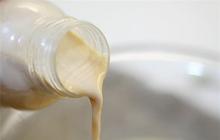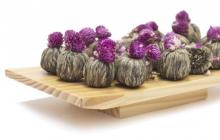The yoghurt starter is intended for making live yoghurt at home. Such yogurt contains a high amount of live and beneficial bacteria. Does not contain any harmful additives and sugar. Yogurt from sourdough can be consumed every day by adults and children.
Application possible
without fermentation
Can be used without fermentation
This starter can be taken in its pure form, as a probiotic, to restore intestinal microflora and normalize digestion.
Dilute the contents of the sachet in a small amount of boiled water at room temperature. Take 1 sachet 1-2 times a day, directly after meals for 1-3 weeks.
detailed information
VIVO yogurt is a starter for making homemade yogurt with your own hands.
Yogurt is perhaps one of the most famous fermented milk products, which has a very delicate and pleasant sour milk taste. Homemade yogurt is recommended for daily nutrition, as it has a number of useful and nutritious properties, especially if VIVO dry bacterial starter is used for preparation.
VIVO yoghurt starter culture does not just ferment milk into yogurt, but endows it with very useful features, because it contains a high amount of live probiotic bacteria. Such yogurt helps to normalize the intestinal microflora and improve digestion, strengthen immunity, restore strength and normalize weight. Regular use helps to compensate for the lack of protein, calcium, vitamins, amino acids, minerals and trace elements in the body.
Natural sourdough yogurt does not contain harmful additives such as sugar, preservatives, dyes, flavorings, etc. It is guaranteed fresh and safe, therefore it is ideal for consumption by people of all ages, children, athletes, pregnant and lactating women, the elderly and everyone who follows a healthy diet.
VIVO sourdough yoghurt is a great and natural alternative to store-bought yoghurts that the whole family will love.
Cooking
Homemade yogurt is very easy to make. For this preparation, you will need quite a bit of your personal time, VIVO bacterial starter, a saucepan or a jar, a blanket or a large towel.
The sourdough must be added to milk at a temperature of +37..+40 °C (slightly warmer than body temperature) and mix well. After that, the container with milk must be wrapped in a blanket or a large towel to ensure that the temperature is maintained and left to ferment for 6-8 hours. Once the yogurt is cooked, it should be put in the refrigerator to cool. But you can eat immediately after cooking.
And if you have a yogurt maker or slow cooker with a yogurt setting, the fermentation process will be even easier.
Instructions for cooking in a saucepanInstructions for cooking in a yogurt maker
Instructions for cooking in a slow cooker
Bacterial composition
Compound
Lactose,
Streptococcus thermophilus,
Lactobacillus delbrueckii ssp. bulgaricus,
lactobacillus acidophilus,
Bifidobacterium lactis
The amount of bacteria in the sachet is enough to guarantee the fermentation of 3 liters of milk (at the end of the starter expiration date).
Storage conditions and shelf life
In the refrigerator (at a temperature of +2..+8)- 12 months.
Payment to the current account: You can pay for an order to our account using your online banking, through the cash desk of any bank in Russia, as well as through a payment terminal.
Homemade baked milk yogurtOnce upon a time, I was told that Greek yogurt is obtained by weighing regular yogurt like cottage cheese. A lot of whey drains, but a thick and tasty product remains. Try it!
To make it even tastier, make it from baked milk. The more flavor in this milk, the better! From sterilized and pasteurized (store) it will also work.
I make my own yogurt in a yogurt maker. I mix a couple of good spoons with a liter of milk (and I really like baked milk), pour it into jars and leave it overnight. If you do not have a yogurt maker, remember the rule - the temperature for ripening should be about 40C, while usually 6-8 hours are enough. Such a stable temperature can be achieved by pouring warm milk into a saucepan (and enough so that it does not cool down quickly) and, wrapping it in a blanket, put it in a very warm place. Option two - try to do it in a thermos with a wide neck.
It is also important to remember rule number two - yogurt does not like movement, otherwise the clot collapses. Put the pan - and do not touch it. But be that as it may, when you transfer the finished yogurt somewhere, the clot will collapse, and the yogurt will lose its density.
In order for it to be thick in any case, it must be put in a tight bag (preferably triangular, it drains faster) and hang over a bowl. For a few hours. From a liter of milk you get 400-500 grams of thick (Greek) yogurt.
If you make it in a yogurt maker, you don't have to heat the milk. Just put 2 tablespoons of yogurt in a bowl and pour over milk.

Stir well.
Pour into a handy pitcher.

And pour into jars.
Cover them with lids, setting the number on them, turn on the yogurt maker and leave for 6-8 hours.

Put the finished yogurt in the refrigerator for several hours.
Put in a weighing bag or simply on a sieve lined with a thick cloth.

Previously, I have already cooked yogurt with baked milk in a slow cooker. It is very tasty, sour with a delicate aftertaste of baked milk. I tried adding dark syrup, fruits, berries and just sugar to it ... but there was nothing perfect! I want to say a big thank you to Anna lifetastegreat for the cinnamon idea! Baked milk and cinnamon with sugar - it's very tasty! I did not add it to the sourdough itself, but simply sprinkled cinnamon sugar in a thick layer on the already prepared yogurt. In my opinion, it turned out perfect. And as always, "Everything ingenious is simple!"

Ingredients:
Baked milk from 3.2% 1 l.
Yogurt without additives 150 gr.
Sugar with cinnamon - to taste
Stage 1
First, prepare jars for yogurt. Thoroughly wash them and pour boiling water over them, leave to dry.
Stage 2
We heat the milk to a temperature of 40 degrees.
Stage 3
Add yogurt (preferably at room temperature) to the milk and stir thoroughly so that the yogurt is completely dissolved.
Stage 4
Pour the resulting mixture into clean and dry jars.
Stage 5
We put a silicone mat or a cotton napkin on the bottom of the multicooker bowl, put jars of yogurt and cover them with lids. No need to twist! Pour water at room temperature, approximately to the level of milk in jars.
We close the lid and turn on the "Multi-Cook" mode, set the temperature to 40 degrees for 8 hours. Do not open the multicooker lid during cooking!
After the end of the program, immediately put the yogurt in the refrigerator for several hours.
Sprinkle the yoghurt generously with cinnamon sugar before serving.
Detailed recipe with step by step photos on the website
Try making yogurt from baked milk! I'm in love with him! And in general, homemade yogurt is a great platform for culinary creativity! after all, you can control the density, consistency, taste ... and quality, of course!
I make it in a slow cooker, I have Bork, so I write a method for it, but you can make this yogurt with any method. Plus, I like very thick yogurt, so I always throw it back into a linen bag or cheesecloth to glass the whey.


Ingredients:
2 liters of baked milk 3.5-4% with a shelf life of 5 days (the fatter the milk, the thicker and more yogurt will be)
200 ml yogurt without additives (also with a short shelf life, I really have 14 days, but it works great)
cinnamon
Method:
1. Boil milk together with cinnamon sticks (if you add powder, then you can later. I boil in a slow cooker (multi-chef mode 100C for 25 minutes). Strain the milk from foams, etc., wash the bowl and return the milk to it. Add cinnamon, if in powder.
2. Cool down to 55C, add yogurt, mix. Close the lid, turn the handle so that the lid is tightly closed. You don’t need to turn on the heating, just leave it overnight, or for about 8 hours. In this multicooker model, the lid closes very hermetically, so the heat is kept calm all night.
3. Put the finished yogurt in a linen bag or gauze in several layers and hang for several hours to become very thick. For about 4 hours. If it becomes quite thick, then you can dilute it a little with whey or yogurt, which was fermented, if it remains.
4. Transfer the yogurt from the bag into a bowl, blend with a blender until completely homogeneous and arrange in jars. Keep refrigerated.
Once upon a time, I was told that Greek yogurt is obtained by weighing regular yogurt like cottage cheese. A lot of whey drains, but a thick and tasty product remains. Try it!
To make it even tastier, make it from baked milk. The more flavor in this milk, the better! From sterilized and pasteurized (store) it will also work.
I make my own yogurt in a yogurt maker. I mix a couple of good spoons with a liter of milk (and I really like baked milk), pour it into jars and leave it overnight. If you do not have a yogurt maker, remember the rule - the temperature for ripening should be about 40C, while usually 6-8 hours are enough. Such a stable temperature can be achieved by pouring warm milk into a saucepan (and enough so that it does not cool down quickly) and, wrapping it in a blanket, put it in a very warm place. Option two - try to do it in a thermos with a wide neck.
It is also important to remember rule number two - yogurt does not like movement, otherwise the clot collapses. Put the pan - and do not touch it. But be that as it may, when you transfer the finished yogurt somewhere, the clot will collapse, and the yogurt will lose its density.
In order for it to be thick in any case, it must be put in a tight bag (preferably triangular, it drains faster) and hang over a bowl. For a few hours. From a liter of milk you get 400-500 grams of thick (Greek) yogurt.
If you make it in a yogurt maker, you don't have to heat the milk. Just put 2 tablespoons of yogurt in a bowl and pour over milk.
Stir well.

Pour into a handy pitcher.

And pour into jars.

Cover them with lids, setting the number on them, turn on the yogurt maker and leave for 6-8 hours.

Put the finished yogurt in the refrigerator for several hours.
Put in a weighing bag or simply on a sieve lined with a thick cloth.

Leave for a few more hours in a cool place. Take a look.

And transfer to a bowl. Ready!


